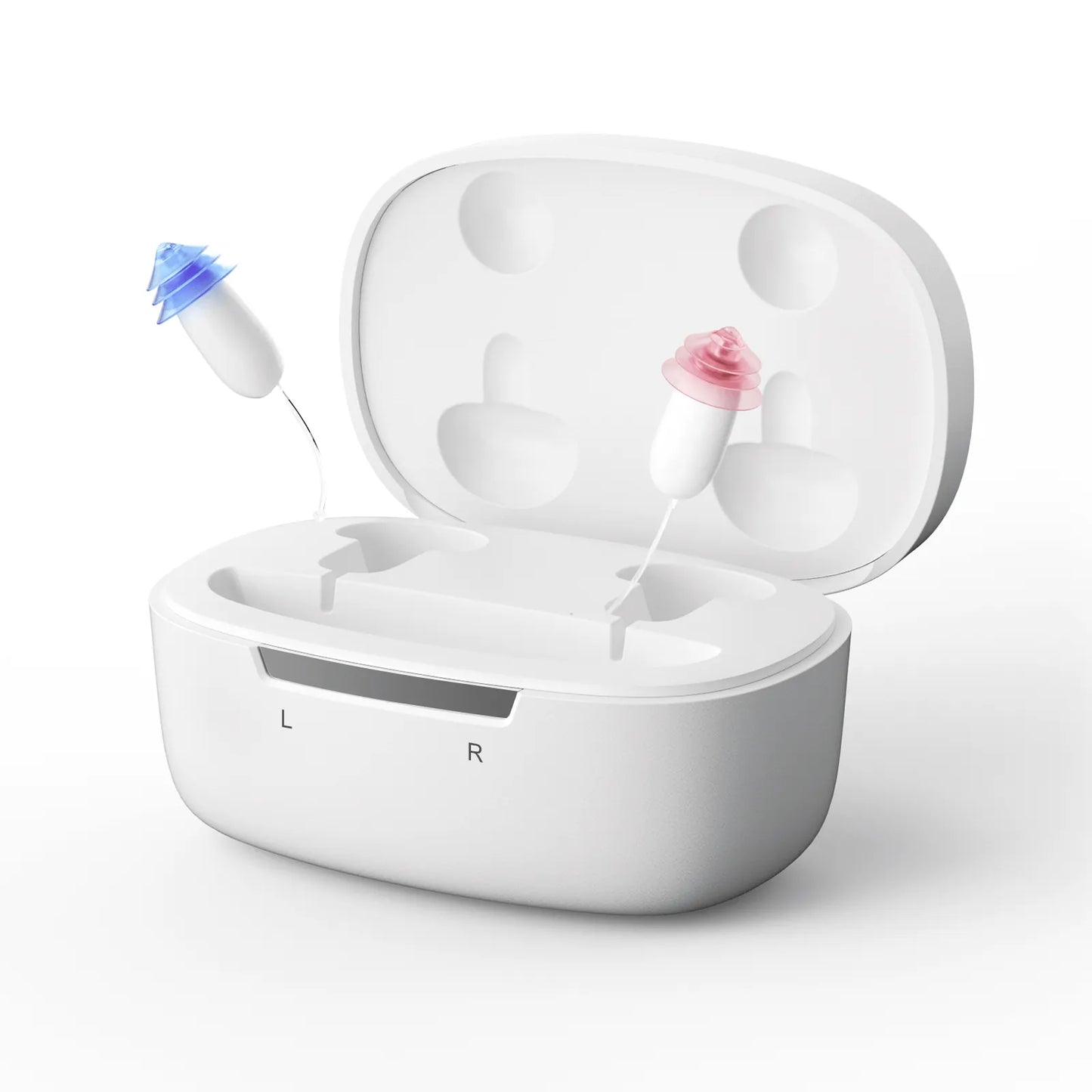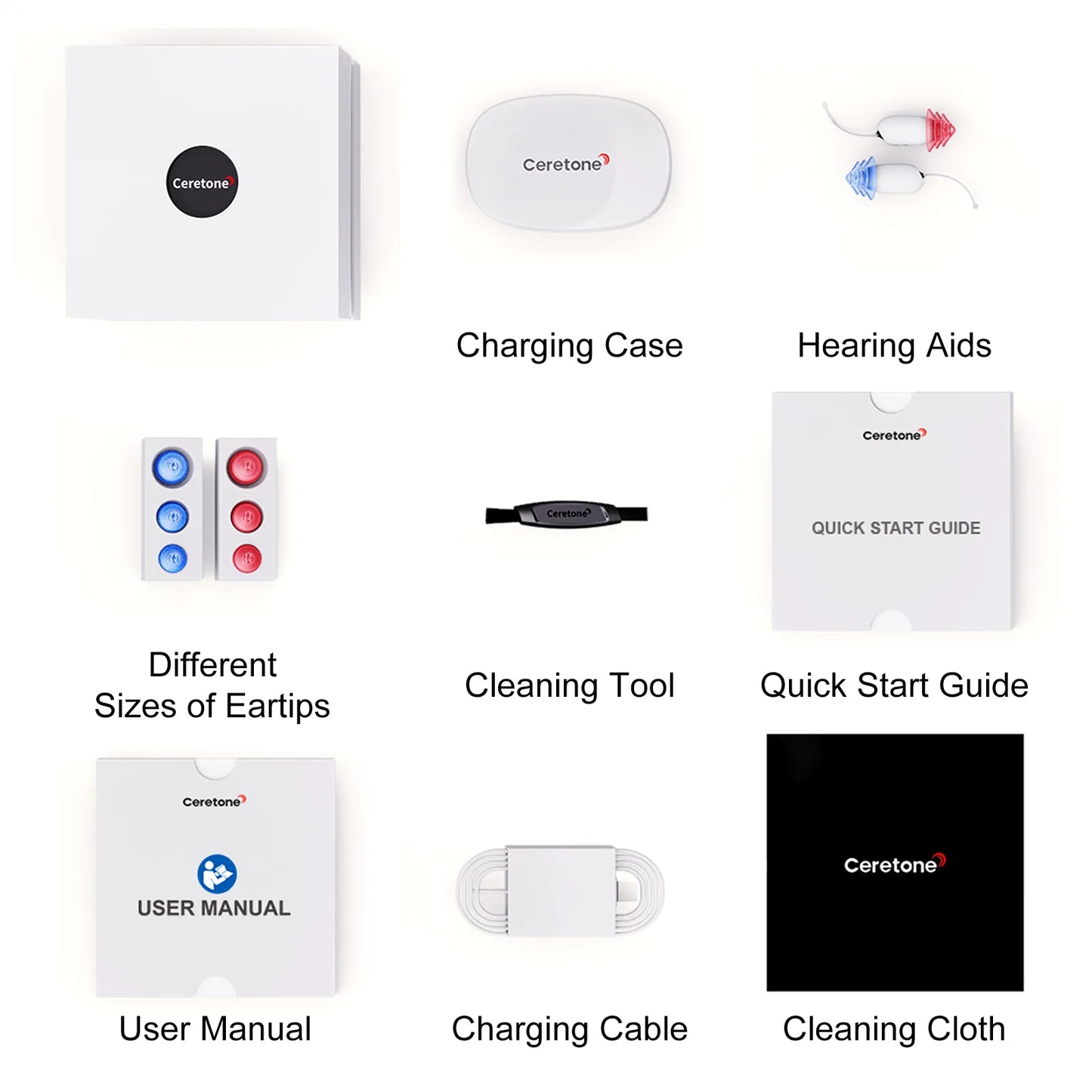Rediscover The Sounds Of Life How To Reconnect With Nature
There’s an incredible symphony that plays around us every day, a harmonious blend of natural sounds that many of us take for granted.
The gentle rustle of leaves in the wind, the melodic chirping of birds at dawn, the soothing crash of waves on a beach—these sounds form the backdrop of our lives, enhancing our connection to the world around us.
For those experiencing hearing loss, these sounds often fade into the background or disappear entirely. Fortunately, modern hearing aids like those from Ceretone, especially the Core One OTC hearing Aid can help rediscover these natural symphonies, reconnecting individuals with the world in ways they may have thought were lost forever.
The Importance of Natural Sounds
Natural sounds are more than just pleasant auditory experiences. They play a crucial role in our well-being and connection to the environment. Studies have shown that exposure to natural sounds can reduce stress, improve mood, and enhance cognitive functioning. These sounds also serve as important environmental cues, helping us navigate and understand our surroundings. For example, the sound of approaching waves can signal a nearby ocean, and the rustling of leaves can indicate a gentle breeze or an approaching animal.
When hearing loss begins to set in, the subtle yet significant sounds of nature often become muffled or inaudible. This can lead to a sense of isolation and disconnection from the environment. Hearing aids are designed to address this issue, offering advanced technology that brings these sounds back to life with clarity and precision.
How Hearing Aids Enhances Natural Sounds
Hearing aids like Core One OTC hearing Aids are equipped with state-of-the-art features that specifically enhance the experience of natural sounds. Here’s how they can make a difference:
Advanced Sound Processing
Hearing aids use sophisticated algorithms to process sounds in real time. This means they can distinguish between different types of sounds, amplifying the subtle nuances of nature without overwhelming the wearer with background noise. Whether it`s the gentle rustling of leaves or the distant call of a bird, these hearing aids ensure that every sound is captured and delivered with high fidelity.
Directional Microphones
The directional microphones in hearing aids focus on sounds coming from specific directions, which is particularly useful in natural settings. For instance, if you’re sitting by a stream, the hearing aids can focus on the sound of flowing water, minimizing other ambient noises. This directional capability helps create a more immersive and natural listening experience.
Noise Reduction
Natural environments can be noisy, with sounds blending in a way that makes it difficult to distinguish individual elements. Hearing aids feature advanced noise reduction technology that filters out unwanted background noise. This means you can enjoy the soothing sound of waves crashing on the shore without the interference of wind noise or distant traffic.
Customizable Sound Profiles
Everyone’s hearing needs are unique, and hearing aids allow for personalized sound profiles. Audiologists can fine-tune these profiles to enhance the specific sounds that matter most to you. Whether you’re an avid bird watcher who wants to hear every chirp and tweet, or a nature enthusiast who loves the sound of rustling leaves, your hearing aids can be customized to ensure you never miss a moment.

Buy Now
Reconnecting with Nature: Real-Life Stories
The impact of hearing aids on users’ lives is profound, as evidenced by the many testimonials from those who have rediscovered the sounds of nature. Here are a few heartwarming stories:
John’s Birdwatching Revival
John, a passionate birdwatcher, began to feel frustrated as his hearing loss made it increasingly difficult to hear the songs and calls of the birds he loved. After being fitted with hearing aids, John experienced a remarkable change. He was able to hear the delicate warbles and trills of birds once again, allowing him to fully enjoy his birdwatching hobby. “It’s like someone turned the volume back up on my life,” John says. “I can hear the birds as if they’re right next to me. It’s an incredible feeling.”
Emma’s Tranquil Walks
For Emma, long walks in the park were a favorite pastime, providing her with peace and a sense of connection to nature. However, as her hearing diminished, the walks became less enjoyable. The sounds of leaves rustling, squirrels scampering, and water flowing were barely audible. With Ceretone hearing aids, Emma’s walks have been transformed. “The world feels alive again,” she shares. “I can hear everything—the leaves under my feet, the birds in the trees, even the distant hum of a waterfall. It’s pure magic.”
Tom’s Coastal Retreat
Tom loved spending time by the ocean, but the hearing loss had dulled the once-vivid experience of waves crashing and seagulls calling. After getting hearing aids, Tom was overwhelmed by the difference. “Standing on the beach and hearing the waves again brought tears to my eyes,” he recalls. “It’s like reconnecting with an old friend. The ocean feels alive again, and so do I.”
Practical Tips for Enjoying Nature with Hearing Aid
To make the most of your hearing aids in natural settings, consider these practical tips:
Regular Maintenance
Ensure your hearing aids are in optimal condition by cleaning them regularly and having them checked by an audiologist. Proper maintenance will keep the sound quality clear and reliable.
Use Wind Noise Reduction Features
If you’re in a windy environment, activate the wind noise reduction feature on your Ceretone hearing aids. This will help minimize wind interference, allowing you to focus on the natural sounds around you.
Experiment with Sound Profiles
Work with your audiologist to create different sound profiles for various environments. You might have one profile for quiet nature walks and another for more dynamic settings like the beach.
Take Advantage of Directional Microphones
Position yourself to face the primary source of the sound you want to hear. For example, if you’re listening to a stream, face the water to let the directional microphones enhance that specific sound.
Stay Connected with Your Audiologist
Regular check-ins with your audiologist can help fine-tune your hearing aids as your hearing needs change. They can adjust settings to ensure you’re always getting the best possible experience.

Buy Now
Here is How You Can Maintain Your Hearing Aid Device for a Longer Duration:
Maintaining your Ceretone hearing aids is crucial for ensuring optimal performance and longevity. Here are some essential maintenance tips to keep your hearing aids in top condition:
1. Daily Cleaning
Wipe Down:
Use a soft, dry cloth or a special hearing aid cleaning wipe to gently wipe the exterior of your hearing aids daily. This removes dirt, earwax, and moisture.
Dry the Hearing Aids:
Make sure your hearing aids are completely dry before placing them in their storage case. Avoid using water or cleaning solutions.
2. Regular Inspection
Check for Wax Build-up:
Inspect the receiver and microphone openings for any build-up of earwax or debris. Use a soft brush or a cleaning tool provided by Ceretone to gently clean these areas.
Examine the Battery Compartment:
Ensure the battery compartment is free from moisture and debris. Replace the batteries as needed and check that they are correctly installed.
3. Use a Drying Kit
Drying Box:
Invest in a hearing aid drying box or dehumidifier. These devices help remove excess moisture that can damage the internal components of your hearing aids, especially if you live in a humid climate.
4. Storage
Safe Storage:
When not in use, store your hearing aids in their designated case to protect them from dust, moisture, and physical damage. Avoid leaving them in hot or cold environments, such as a car.
5. Battery Care
Battery Handling:
Handle batteries with clean, dry hands. Replace batteries according to the manufacturer’s instructions and make sure they are the correct type for your hearing aids.
Turn Off When Not in Use:
Turn off your hearing aids when they are not in use to conserve battery life. Open the battery door slightly if you are not wearing them for an extended period.
6. Professional Maintenance
Regular Check-ups:
Schedule regular appointments with your audiologist or hearing care professional for a thorough inspection and maintenance. They can perform tasks that require professional expertise, such as adjusting settings and ensuring the hearing aids are functioning correctly.
Repairs:
If you notice any issues with your hearing aids, such as distortion, feedback, or inconsistent performance, contact Ceretone or your hearing care professional for repair services.
7. Avoiding Common Hazards
Avoid Water Exposure:
Keep your hearing aids away from water, including showers, swimming pools, and rain. Moisture can damage the electronic components.
Limit Exposure to Chemicals:
Avoid exposing your hearing aids to hair sprays, perfumes, and other chemicals that could damage the materials or electronics.
8. Cleaning Accessories
Earwax Guards:
Replace earwax guards or filters regularly to prevent wax from reaching the internal components of your hearing aids.
Cleaning Tools:
Use the cleaning tools provided by Ceretone or recommended by your audiologist. These tools are designed to safely and effectively clean and maintain your hearing aids.
9. Keep a Log
Maintenance Record:
Maintain a log of when you perform routine cleaning, replace batteries, and schedule professional check-ups. This helps you stay on top of maintenance tasks and track any issues that may arise.

Rediscovering the sounds of life through Ceretone hearing aids can be a transformative experience. The gentle rustling of leaves, the melodic chirping of birds, and the rhythmic crashing of waves are not just sounds—they are connections to the world around us, enriching our lives and enhancing our well-being. With advanced technology, personalized sound profiles, and a commitment to quality, hearing aids make it possible to once again enjoy these natural symphonies in all their glory. Embrace the sounds of life and reconnect with nature, one beautiful note at a time.